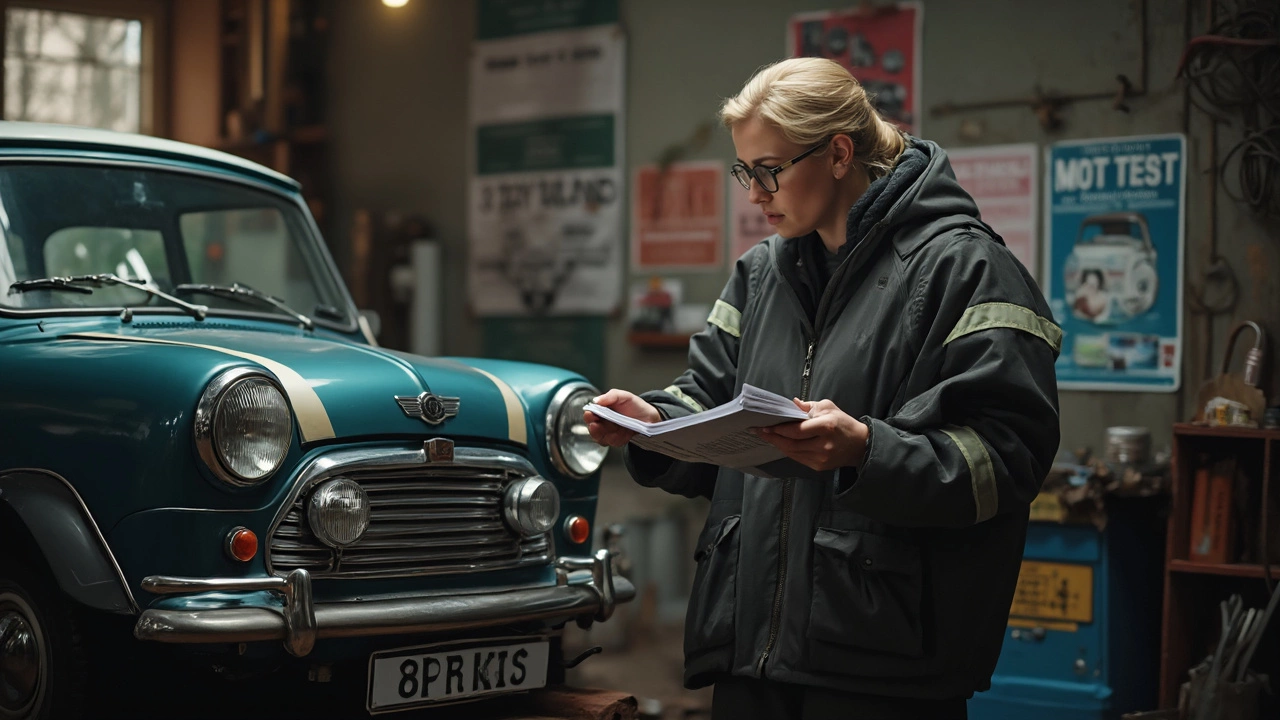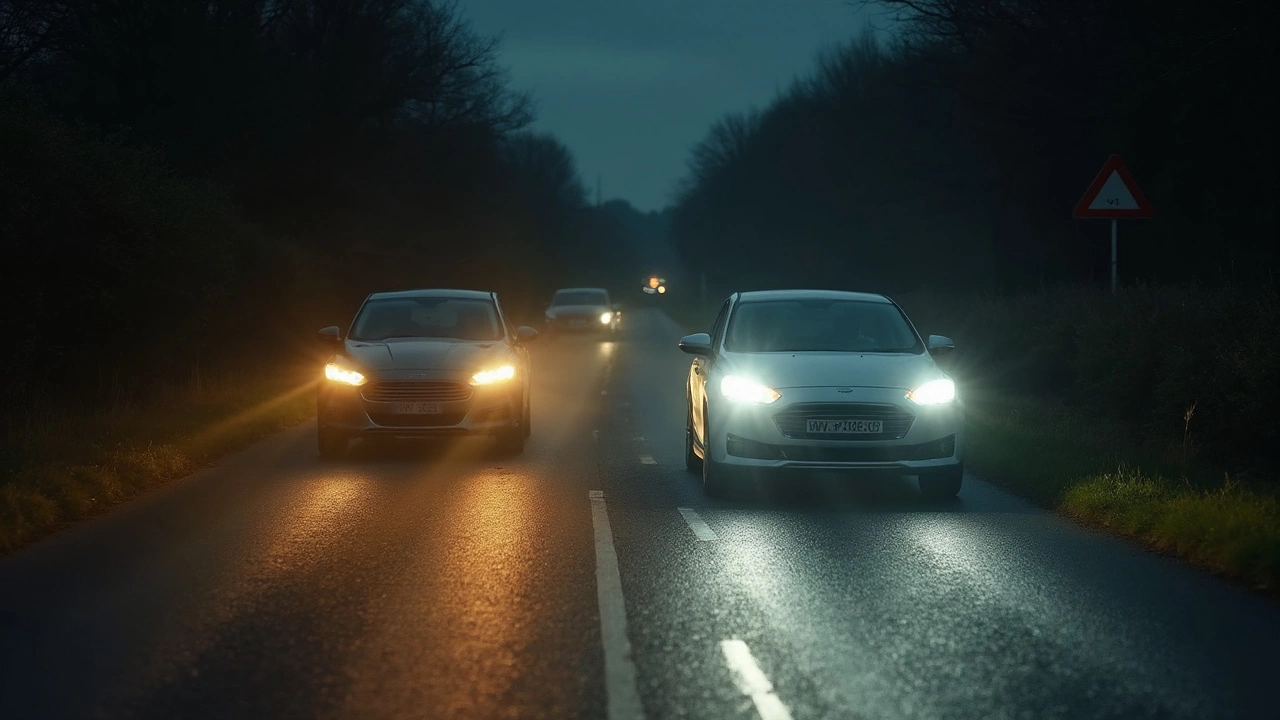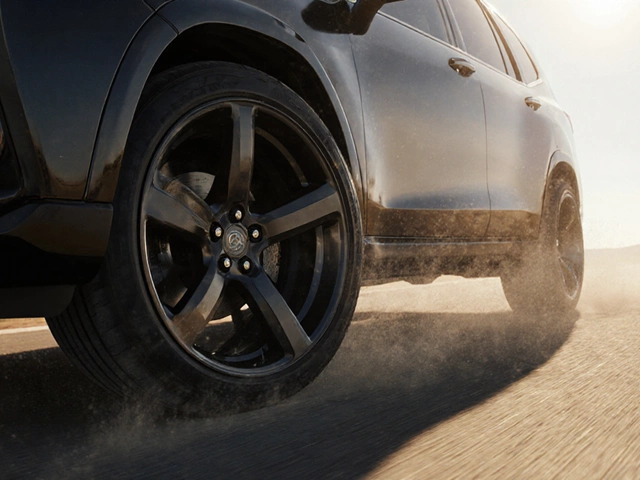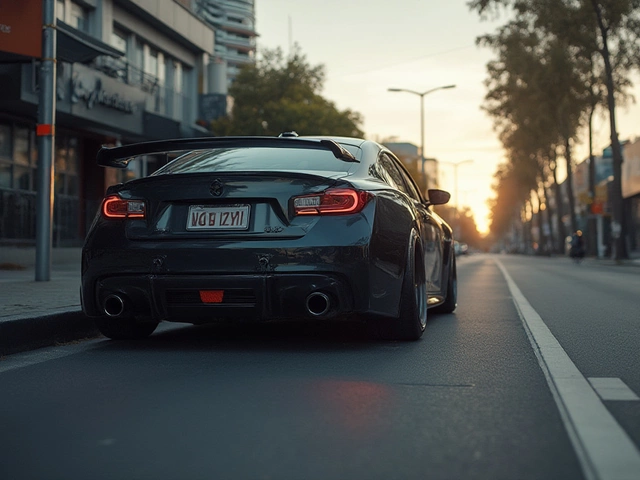Swapping out your stock headlight bulbs for LED ones seems like a no-brainer—brighter lights, longer lifespan, and that crisp modern look. But before you drop those new bulbs in, there’s more to it than just popping them into your factory housings.
Not every headlight was made with LEDs in mind. Manufacturers usually design those housings for halogen or HID bulbs, so putting an LED in the socket can give you weird beam patterns or even blind other drivers. Plus, some cars will throw dashboard errors if you swap the bulbs without the right resistors or adapters.
If you’re itching to make the change, you’ve got to know what your car came with and whether the LED upgrade matches up. Doing a bit of homework here can save you from headaches like flickering lights or blurry night vision. Don't just “wing it”—the right fit can make all the difference between slick, bright lights or a total mess on the road.
- Factory Headlights vs. LED Bulbs: What's the Difference?
- Why Swap to LED Bulbs? The Pros and Cons
- Will LED Bulbs Fit My Current Headlights?
- Installing LED Bulbs: Step-by-Step Tips
- Legal Stuff: Is It Actually Allowed?
Factory Headlights vs. LED Bulbs: What's the Difference?
Before you tear into your headlights, it helps to know what you’re dealing with. Most factory headlights use either old-school halogen bulbs or, on some newer rides, HID (high-intensity discharge) bulbs. These systems work differently than LED bulbs and that’s where things can get tricky.
Halogen bulbs, the most common, heat up a tiny wire until it glows. They’re cheap and easy to find, but they put out a yellowish light and burn out faster. HIDs are a step up and use an electrical arc with gas to make a whiter, brighter light, but they need more parts like ballasts. Neither was designed for LEDs out of the box.
LEDs are a whole other game. Instead of heat and filaments, they use electronics to fire up tiny chips. That means they run cooler, save power, and last way longer—a good LED could keep going for ten years or more. They also make a crisp, white beam that looks way more modern and helps you spot road hazards quicker.
But here’s the rub: headlights built for halogen or HID bulbs focus the light differently than LEDs. When you put a new bulb style in an old housing, the beam might scatter, make weird shadows, or blind other drivers. That’s why some folks end up with brighter but worse night vision after swapping to LEDs.
If your car didn’t come with LEDs, you might notice a few issues right away, like uneven lighting, hot spots, or even the classic “flicker” some drivers complain about. That’s because factory headlight housings and reflectors are usually set up for the original bulb, not the sharper LED design.
So, before making the leap, be sure you know what type of bulbs your headlights are built for, and what you’ll need if you want that bright modern look without messing up your night drive.
Why Swap to LED Bulbs? The Pros and Cons
Thinking about ditching your old bulbs for LEDs? There are solid reasons why people make the switch, but it’s not all smooth sailing. Let’s break down what you’re really getting into.
- LED bulbs can last way longer than traditional halogen bulbs. While a typical halogen bulb clocks out around 500 to 1,000 hours, most LED brands rate their products at 20,000 hours or even more.
- They use less power. LEDs suck up about 75% less energy than halogens, which means less stress on your car’s electrical system and maybe even a tiny bump in fuel efficiency.
- The light output is a huge win. LEDs look brighter and whiter—think daylight vibes instead of that yellowish glow from halogens. It’s just easier to see road signs, lane lines, and potential hazards.
- They also run cooler, so there’s less risk of heat damage to your headlight housing or wiring.
Here’s a quick side-by-side:
| Feature | Halogen Bulbs | LED Bulbs |
|---|---|---|
| Lifespan | 500–1,000 hours | 15,000–30,000 hours |
| Energy Use | ~55W each | ~15W each |
| Color Range | Yellowish (3200K) | White/Blue (5000-6500K) |
| Heat Output | Hot | Cool |
Now, let’s talk drawbacks. Most factory headlights aren’t built for the focus of LED bulbs. You could end up with scattered beams that annoy other drivers or make it hard for you to see ahead. Plug-and-play LEDs don’t always just work—the wiring or socket can be wonky, and sometimes you get annoying dashboard errors or flickering lights unless you install extra adapters.
And the legal stuff? It’s not always black and white. Some states (and even countries) will fail your car at inspection if your lights don’t match their brightness or pattern rules. So, if you’re eyeing LEDs, double-check the local rules before you click “buy.”

Will LED Bulbs Fit My Current Headlights?
If you’re eyeing an upgrade to LED bulbs in your factory headlights, the big question is: will they actually fit? Most factory headlights are set up for halogen or HID bulbs, not LEDs. That means even if the bulb shape and base look the same, swapping them out isn’t always as simple as it seems.
Let’s break it down. The fit mostly depends on the headlight housing, the type of bulb socket, and the way the beam is focused. For most cars, the common bulb types are H11, 9005, H4, and a few others. Lots of manufacturers now make LED bulbs to fit these sockets, but not every housing is made to handle how LEDs throw out light. The beam might end up scattered or cause glare.
According to a SEMA Market Research report, about 20% of late-model cars have housings that work okay with a direct LED bulb swap. That leaves a whopping 80% where you’ll probably run into at least one snag—like poor light focus or trouble getting the bulbs to fit under the dust covers.
| Bulb Type | LED Retrofit Fit Rate | Common Issues |
|---|---|---|
| H11 | Good (60%) | Fan clearance, beam pattern |
| 9005 | Good (65%) | Glare, fitment |
| H4 | Average (50%) | Focus, wiring |
| D2S (HID) | Poor (20%) | Socket mismatch, light output |
Your car manual isn’t always helpful, either, since it rarely covers aftermarket bulbs. One solid tip: physically check your current bulb’s size and where it sits in the housing compared to the LED you want to buy. If the LED’s heatsink or fan sticks out too far, it won’t fit with your headlight dust cap, and that’s a hard stop unless you want to run open housings (which is not smart for protecting your bulbs).
Some cars also throw dashboard errors if LEDs pull less power than halogen bulbs. You might need extra resistor kits or decoder modules to keep things normal. If your car has daytime running lights that dim the bulbs rather than switch off, those systems can act weird with LEDs too.
"Not all LEDs are built equally, and not every headlight can take them without issues—always check that the bulb is labeled for use in your type of housing," says the folks at The Retrofit Source, a respected headlight specialist.
If you’re stuck or not sure if an LED will fit, try searching for user reviews by people with your exact make and model—or hit up a shop that installs them regularly. You don’t want to end up out fifty bucks for bulbs you can’t use. LED upgrades work best when the fit is just right for both your socket and the shape of your housing.
Installing LED Bulbs: Step-by-Step Tips
Ready to ditch those old bulbs for LEDs? Here’s a step-by-step process that should keep things simple and reduce headaches. You’ll want to check your owner’s manual before you start, just to be sure you’re getting at the right spot and using the right bulb type. No two cars are totally alike, but these steps cover most setups out there.
- Pick the right LED bulbs. Make sure you’re getting LEDs that match your vehicle’s make and model. Don’t just rely on a quick Google search—some cars use different bulb sizes for low and high beams.
- Disconnect the battery. Messing with headlights isn’t super risky, but it’s smart to kill the power so you don’t short anything out.
- Pop the hood and get to the headlight housing. Usually, you’ll see a dust cover or a plastic cap on the back. Take that off to reveal the bulb.
- Remove the old halogen bulb. Most twist out with a gentle turn, but if your car uses a clip or spring, unhook it carefully—those little pieces love to disappear.
- Drop in the new LED bulb. Line up the base, then twist or clip it in, just like the old one. If it doesn’t go right in, double-check that you have the right bulb and it’s facing the correct direction.
- Plug in any extra wiring. Some LED kits have a little driver box or need an adapter to work with your car’s wiring. If you need a CANbus adapter (especially in European or newer cars), hook that up now.
- Test the lights before you button everything back up. Check both high and low beams for flickering, warning lights, or weird color. Make sure the beam pattern looks clean and isn’t shining right into other drivers’ eyes.
- Put everything back together. Snap the caps and covers back on, reconnect the battery, and close the hood.
Lots of folks mess up the install by forcing the wrong size bulb, skipping the adapter, or not testing the light direction before finishing. Don’t be that guy stuck redoing the whole job in the dark.
“About 70% of headlight complaints after LED swaps come from poor installation—including skipped CANbus modules and misaligned bulbs,” says auto tech reviewer Chris Fix.
If you want things to look sharp and work right, take your time to get a solid fit. And remember, beam pattern matters—a bad job can make your car dangerous, not just bright.
| Common Issue | How To Fix It |
|---|---|
| LEDs Flicker | Use a CANbus adapter or anti-flicker harness |
| Dashboard Error | Install load resistors or proper adapters |
| Poor Beam Pattern | Reinstall the bulb properly or try a different brand |
| Bulb Won’t Fit | Double-check bulb size/model before forcing |
If you can’t get things right after a couple of tries, sometimes it’s worth asking a shop for help. It’s better to roll out with a safe LED bulbs upgrade than just hoping for the best.

Legal Stuff: Is It Actually Allowed?
Now for the part nobody wants to talk about, but really needs to—are LED bulbs actually legal for factory headlights? The short answer: it's complicated. In the United States, headlights have to meet standards set by the Department of Transportation (DOT) and the National Highway Traffic Safety Administration (NHTSA). Most factory headlights with halogen bulbs are DOT-approved, but when you put aftermarket LED bulbs into those housings, they usually lose that approval because the beam pattern can change.
Some brands of LED bulbs claim they're "street legal," but that only holds up if the bulb and the housing together meet DOT requirements. In reality, very few aftermarket LED bulbs will pass an official inspection in a regular halogen reflector housing. Cops probably won’t pull you over just for brighter headlights, but you could get nailed during a safety check or if your lights are blinding other drivers.
In Europe and other parts of the world, the rules are even stricter. If your car wasn't originally designed with LED headlights and you swap them in, your car might automatically fail inspection. Insurance companies could also use non-approved modifications as a reason to reject claims after an accident.
- If you want to stay totally legal, only use LED bulbs in headlight housings that are specifically designed for them.
- Check your state, province, or country rules before doing the swap—some places are more strict than others.
- If you're dead set on swapping, look for bulbs that are SAE-approved or have paperwork showing they're legal for road use in your region, but still don't assume you'll fly under the radar everywhere.
Playing it safe saves you money, hassle, and keeps everyone on the road safer. Legal gray areas are rarely worth the risk, especially with something as important as night driving.






